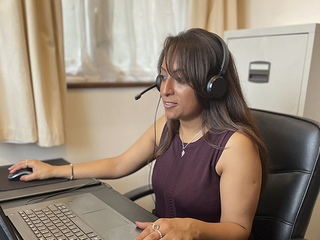Burkitt lymphoma symptoms and diagnosis
Burkitt lymphoma symptoms mainly depend on where in your body the lymphoma cells collect. Doctors will conduct a series of tests to confirm a diagnosis.
Symptoms of Burkitt lymphoma
Lymphoma cells can collect in your lymph nodes (glands), causing them to swell into lumps. These can be in your neck, armpit or groin and are the most common symptom of Burkitt lymphoma.
Lymphoma cells can also collect in other areas of your body, such as your bowel, stomach area (abdomen), liver and spleen, and cause symptoms including:
- night sweats that soak your clothes and bedding.
- high temperature (fever)
- unexplained weight loss
- extreme tiredness (fatigue)
- pain in your abdomen
- feeling sick (nausea)
- being sick (vomiting).
If the lymphoma affects your bone marrow, you might not have enough blood cells, and this can cause:
- weakness
- extreme tiredness (fatigue)
- higher risk of infection
- higher risk of bleeding.

Worried about anything or have questions?
If you need someone to talk to, please don't hesitate to contact our Support Service by phone or email.
Tests to diagnose Burkitt lymphoma
Your doctors will need to do different tests before they make a diagnosis. We have more information about each test below:
A doctor takes a sample of bone marrow - usually from the back of your hip. A specialist doctor then looks at the cells or tissue under a microscope.
Find out more about bone marrow biopsies.
Your doctor will remove all or part of a lymph node during a short operation. They send the sample to the laboratory to be looked at under a microscope.
These tests look for gene changes in your cells. Specialist doctors will check for problems in your c-myc gene and other genes linked to Burkitt lymphoma.
Read more about genetic testing.
You will have tests to see if the lymphoma has developed in other parts of your body, including:
- a physical examination (looking at any lumps)
- blood tests
- CT scans, PET scans and MRI scans
- a lumbar puncture test, to see if there are lymphoma cells in your spinal fluid.
We have more information about tests and scans.
Stages of Burkitt lymphoma
Doctors use a process called staging to see if the lymphoma has spread, and where to. This helps to plan your treatment.
The stages range from Stage 1 to Stage 4. In Stage 1 the lymphoma cells are in one area of your body (usually the lymph nodes), in Stage 4 they have spread to the bone marrow and/or your brain and spinal cord.
